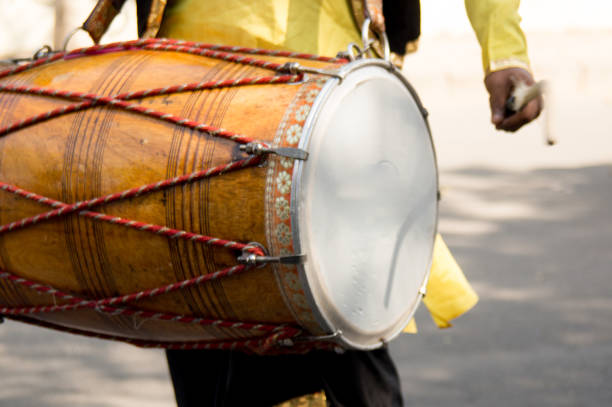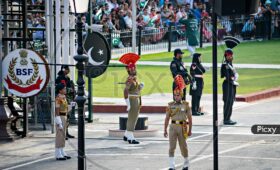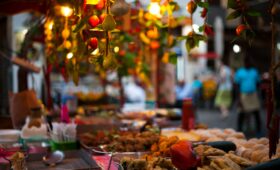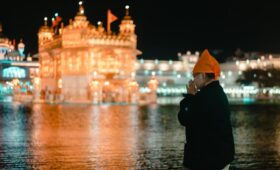Introduction:
Baisakhi, also known as Vaisakhi, holds profound significance in the hearts of Punjabis worldwide. Celebrated with fervor and joy, this festival marks the beginning of the Sikh New Year and commemorates the formation of the Khalsa Panth by Guru Gobind Singh Ji in 1699. Rooted in Punjab’s agricultural heritage, Baisakhi is not merely a religious occasion but a vibrant celebration of unity, abundance, and community spirit. In this comprehensive exploration, we delve into the history, present scenario, significance, and global celebration of Baisakhi, focusing on its rich traditions observed in local Gurudwaras and the historic town of Anandpur Sahib.

History of Baisakhi:
The historical roots of Baisakhi date back to the 17th century, a time of significant religious and social transformation in India. In 1699, Guru Gobind Singh Ji, the tenth Sikh Guru, chose Baisakhi as the occasion to establish the Khalsa Panth, a community of initiated Sikhs committed to upholding righteousness and defending the oppressed. On this auspicious day, Guru Gobind Singh Ji baptized the Panj Pyare (Five Beloved Ones) and initiated them into the Khalsa by administering Amrit (nectar) to them. This event marked a turning point in Sikh history, symbolizing courage, sacrifice, and devotion to the Guru.
Present Scenario and Significance in Punjab:
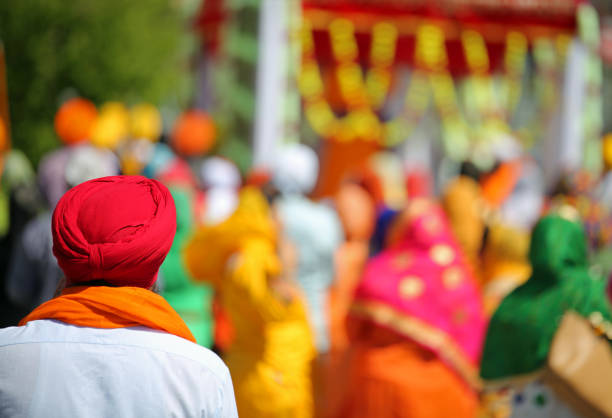
In modern-day Punjab, Baisakhi remains one of the most eagerly anticipated festivals, celebrated with great zeal and enthusiasm. The festival falls on April 13th or 14th every year, marking the harvest season’s onset and the beginning of the solar year in the Indian calendar. The entire region comes alive with vibrant colors, music, dance, and feasting as farmers rejoice in the fruits of their labor and seek blessings for a prosperous year ahead.
One of the most iconic aspects of Baisakhi celebrations in Punjab is the Nagar Kirtan, a procession led by the Sikh community through the streets, accompanied by the rhythmic beat of the dhol (drum) and the melodious tunes of traditional Sikh hymns (Shabads). The procession typically culminates at the local Gurudwara, where devotees gather to offer prayers, partake in langar (community meal), and engage in seva (selfless service).
Local Gurudwaras and Anandpur Sahib Celebrations:

Gurudwaras across Punjab, including the revered Golden Temple in Amritsar, are adorned with colorful decorations and illuminated with lights to mark the festive occasion. Special Akhand Path (continuous recitation of the Guru Granth Sahib) and kirtan (devotional singing) programs are organized, drawing devotees from far and wide to seek spiritual blessings and divine grace.
However, it is at the historic town of Anandpur Sahib where Baisakhi celebrations attain unparalleled grandeur and significance. Known as the birthplace of the Khalsa, Anandpur Sahib hosts a week-long festival leading up to Baisakhi, known as the Anandpur Sahib Baisakhi Fair. The town reverberates with the sounds of martial arts displays, cultural performances, and religious processions, attracting pilgrims and tourists alike from across the globe.
During the Baisakhi celebrations at Anandpur Sahib, the Akal Takht, the highest temporal seat of Sikh authority, conducts the traditional Amrit Sanchar ceremony, reenacting Guru Gobind Singh Ji’s initiation of the Khalsa. Thousands of Sikhs gather at the historic Takht Sri Kesgarh Sahib Gurudwara to participate in this sacred ceremony, reaffirming their commitment to the Sikh principles of equality, justice, and selfless service.
Nagar Kirtan: The Procession of Devotion
Nagar Kirtan, meaning “street hymn singing,” is a grand procession that winds its way through the streets of various cities and towns, resonating with the melodious chanting of hymns and prayers from the Guru Granth Sahib, the holy scripture of Sikhism. This procession is a vibrant display of Sikh culture and faith, featuring traditional martial arts performances, music, and the iconic float carrying the Guru Granth Sahib.
The atmosphere during Nagar Kirtan is electrifying, with devotees and onlookers joining in the procession, singing hymns, and offering prayers. The streets come alive with colorful decorations, flower petals strewn along the path, and the aroma of incense wafting through the air. It’s a time for unity, reflection, and expressing gratitude for the teachings of the Sikh Gurus.
Nagar Kirtan serves as a reminder of the principles of equality, community service, and selflessness advocated by Sikhism. Participants often distribute food, water, and other essentials to bystanders as a symbol of seva (selfless service) and compassion.
Langar: A Feast of Equality and Inclusivity
At the heart of Baisakhi celebrations lies the concept of Langar, a communal kitchen where free meals are served to all, regardless of caste, creed, or social status. The tradition of Langar exemplifies the Sikh principles of equality, humility, and sharing. It is open to everyone, irrespective of religion, race, or background, fostering a sense of unity and belonging.
The preparation of Langar begins days in advance, with volunteers coming together to chop vegetables, knead dough, and cook delicious vegetarian meals in enormous cauldrons. On Baisakhi, Langars are set up in gurdwaras (Sikh temples) and community centers, as well as along the route of Nagar Kirtan, to cater to the large crowds of devotees and participants.
The menu for Langar typically includes simple yet wholesome dishes such as dal (lentil stew), sabzi (vegetable curry), roti (flatbread), and kheer (rice pudding). The emphasis is not on extravagance but on nourishing the body and soul with nutritious, hearty food. Langar volunteers work tirelessly to ensure that everyone is fed, often serving thousands of meals throughout the day.
Partaking in Langar is not just about satisfying hunger; it’s a deeply spiritual experience that reinforces the values of humility, generosity, and unity. Sitting together on the floor, sharing a meal with strangers-turned-friends, transcends barriers and fosters a sense of kinship and understanding.
Celebrations Worldwide:
While Baisakhi holds special significance in Punjab, its joyous spirit transcends geographical boundaries, resonating with Sikhs and Punjabi communities worldwide. In countries such as Canada, the United Kingdom, the United States, and Australia, where a significant Sikh diaspora resides, Baisakhi is celebrated with great fervor, featuring traditional music, dance, food, and cultural performances.
In addition to religious observances, Baisakhi celebrations in the diaspora often serve as occasions for community bonding, promoting Punjabi culture, and fostering intercultural dialogue. Local Gurudwaras play a central role in organizing festivities, including kirtan darbars (devotional singing events), langar seva (community meals), and charitable initiatives aimed at serving the less fortunate.
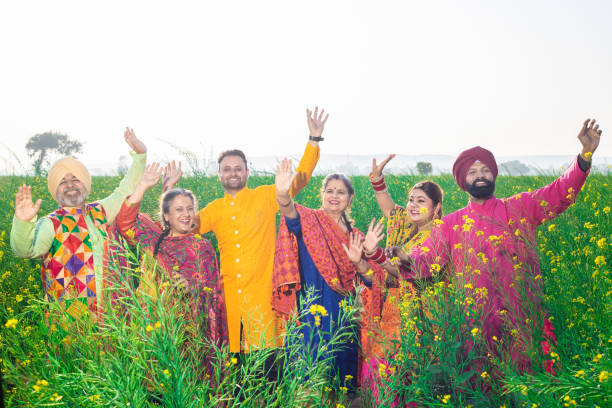
Conclusion:
Baisakhi stands as a testament to the rich amalgam of Punjab’s cultural and religious heritage, embodying the values of resilience, unity, and shared prosperity. From its historical roots in the formation of the Khalsa to its vibrant celebrations in local Gurudwaras and the historic town of Anandpur Sahib, Baisakhi continues to inspire millions with its message of love, courage, and devotion. As Sikhs and Punjabis around the world come together to commemorate this auspicious occasion, Baisakhi serves as a reminder of the timeless teachings of Sikhism and the enduring spirit of community and compassion.
